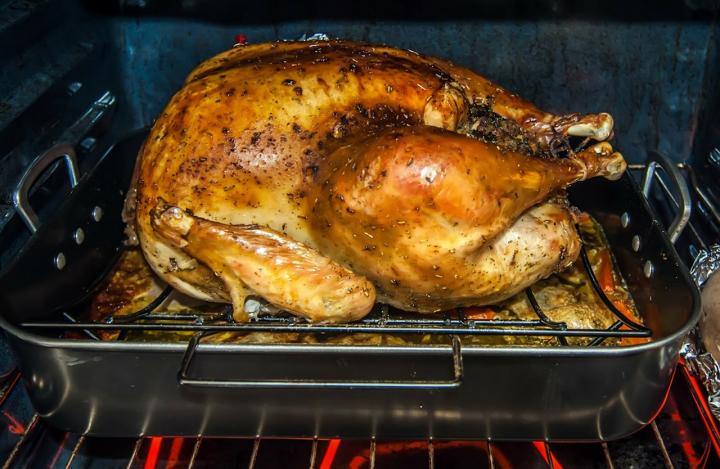
Learn How to Cook the Perfect Turkey
ADVERTISEMENT
And then there are those of us who love Reynolds Oven Bags - Turkey Size. A 21+ lb bird in 2 3/4 hours. Breast down in the bag create juicy breast meat, but turning it over to carve I have not yet mastered.
Our answer to this is a central carving trolley so you have two people to hold the bird using oven gloves and turn together. We cook ours in double layers of tinfoil and turn it half way through cooking. Agree before hand which way to turn it though!! Juicy breast meat every time.
We grew up learning that turkey was to be cooked for at least 15 to 20 minutes (longer for much larger birds) at higher temp (400 to 425F) to bring it up out of the "danger zone" faster as well as "set" the skin (to prevent the skin from going soggy or soft as well as prevent skin splitting), then reduced the heat to cook lower (325 to 350 F) and slower to avoid overly dry meat. Altitude also matters!
I have always followed my mother's recipe for stuffing a turkey. Depending on the size of the bird, use one (1) to two (2) pounds of sausage meat and mix well with thyme (I always thought she meant "It takes a lot of time to stuff a turkey").
She, and I, cook the turkey at 30 minutes per pound at 325 degrees Fahrenheit.
Thanks for the tip, Thomas!
Generally turkeys are roasted 325 Deg. F for between 15 and 20 minutes per pound. Why does your chart seem to indicate about 13 1/2 min. per pound???
Some folks might want to try this method--called Trash Can Turkey
There are many blogs/youtube entries on how to do this---very simple--done outside(frees up the kitchen-plus no electric/gas costs) and the bird will come out very moist and tender, plus a 14 lb turkey will be done in 1 hr and 30 minutes. Costs are a steel trash can(not galvanized) a roll of heavy duty Alum Foil(you will use this anyway), a 24" wooden stake, 2 bags of charcoal. Easy enough to look this up on the internet--no way you can dry this one out if you follow the simple process--
My husband and I bought something like that at depot many years ago. We put our turkey inside of it put a top on it than spread charcoal around the outside ring and some in a little cup made on the top. The turkey was done in no time and juicy. That was the only one they had at the store and never seen again. People love the taste of the turkey. Still got it, don't use it any more since my husband pass and that was his job cooking the turkey.
Since we carve the turkey in the kitchen rather than bringing it whole to the table, I roast for taste, rather than appearance. I roast the turkey breast side down, which results in a juicier breast. It also rests in this position before carving.
A tip to share: I always order a fresh turkey and pick it up the day before Thanksgiving. Thus I avoid having a hulking frozen poultry carcass thawing in my fridge for days before the big event.
Thank you. I have been made fun of for cooking my turkey breast side down.









